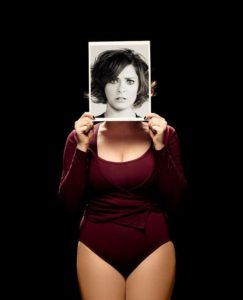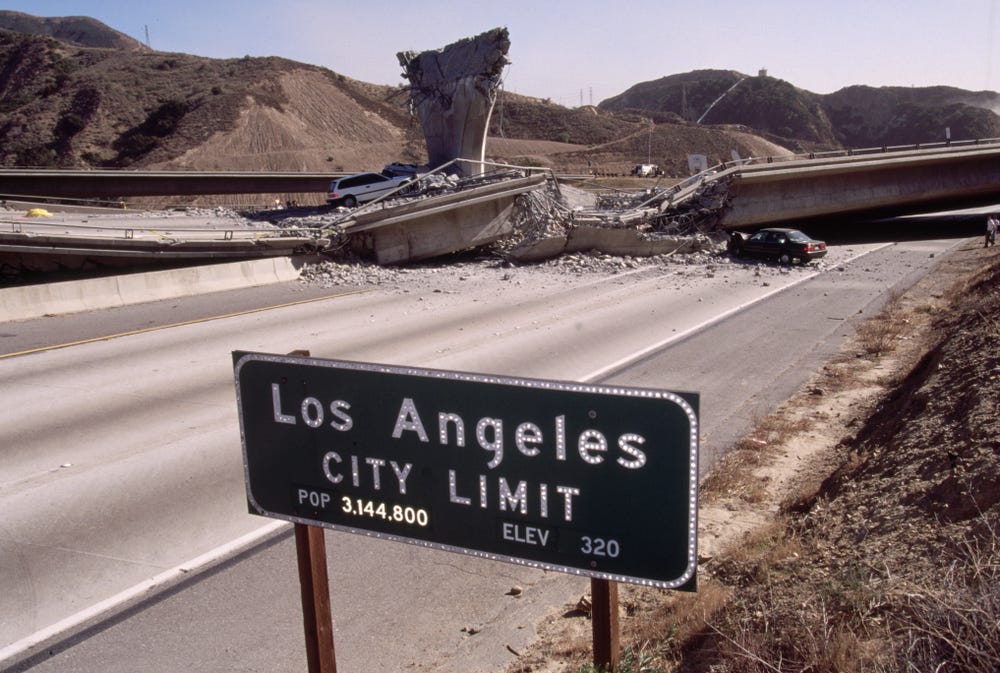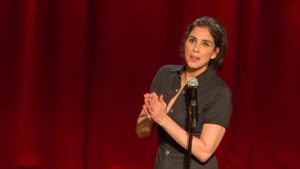Why Jewish Comics are Obsessed with Suffering and Death
A reflection on “Rachel Bloom is Rusty” and the connection between Jewish humor and death

(Illustration source: iStockphoto)
“Humor is the almost-faithful, the work of the one who wants to believe.”
–Jeremy Dauber, Jewish Comedy: A Serious History
As Rachel Bloom, comic and erstwhile star of Crazy Ex-Girlfriend, danced onto stage in her light-up sneakers, I took a bite of licorice, a swig of root beer, and a deep breath. I’ve been a fan of Bloom’s for a while now; I even wrote an article on how the humor of Crazy Ex-Girlfriend relates to the Jewishness of the Gospel of Mark. It was an odd pairing, I know, but as a Jewish scholar of biblical studies and contemporary critical theory (e.g., humor theory), it was in my wheelhouse.
The show I attended, titled “Rachel Bloom is Rusty,” was Bloom’s first performance since the onset of the Covid-19 pandemic. Of course, hardly anything about the pandemic has been funny. And in fact, Bloom took the pandemic seriously by requiring audience members to show proof of vaccination, a negative Covid-19 test, and to wear face coverings unless consuming snacks sold by the venue. The performance itself looked at death and dying with a characteristically Jewish gallows humor, as Bloom told stories of personal pain while also showing us home videos of herself as a child learning about human suffering.

(Rachel Bloom. Photo credit: Emily Shur for the New York Times)
Akin to Crazy Ex-Girlfriend, “Rachel Bloom is Rusty” touched on what journalist Susan Dominus has called “uncomfortable truths.” While storytelling is universally central to standup, the autobiographical experiences Bloom shared were nothing short of harrowing. Having delivered her first child at the start of the pandemic—a baby who fought for her health in the NICU while Bloom’s friend, fellow comedy actor Adam Schlesinger, was dying of Covid—Bloom let her audience know that she was struggling to find fun amidst the horror. Rather than shy away from her pain, she channeled it, layering fears of sickness and death upon every disrupting joke. This was not a set of meaningless slapstick. Instead, like the genre-bending specials of Tig Notaro and Hannah Gadsby—and, honestly, like most humor that engages the complexities of being human—this was real. And it was raw.
Looking back, I recall three autobiographical points that engaged this type of comic sensibility: Bloom’s childhood memories of the January 17, 1994 Northridge earthquake, Bloom’s Jewish atheism, and Bloom’s desire to “believe” despite her atheism.
Let me begin with the earthquake. For Bloom, the Northridge earthquake’s ruins turned into a local tourist attraction. As a child, her parents took her from site to site (read: collapsed buildings) as they explained in no happy terms how the buildings fell and how the people inside them died. Bloom shared home movies of the ordeal—clips of the young actor digesting her proximity to death and, with it, her own mortality. Throughout the screenings, Bloom commented on the absurdity of it all, including the bizarre stylings of her life-and-death lessons, as well as the toll those lessons took on her. There wasn’t a clear punch line to this—much of Bloom’s show was experimental—but the combination of horror and humor stuck with me.

(1994 Northridge earthquake. Photo source: David Butow/Corbis for Getty Images)
Bloom’s Northridge reflections flowed easily into her commentary on theology—or, more rightly, her lack of a theology. She noted that, aside from her cultural Judaism, she does not identify as religious. Her non-theistic orientation, she said, is what ultimately helped her overcome her fear of ghosts. In her mind, so long as she did not believe in a divine realm, ghosts could not exist. So those specters on Disney’s Haunted Mansion ghost train—the ones that claim to “follow you home” at the end of the ride? Not real. The ghosts lingering between the fallen debris at Northridge? Also not real.
For Bloom, though, a lack of faith did not guarantee a lack of fear. While ghosts may not be real, suffering and death and the worry of what happens after this life—or, in her mind, what doesn’t happen—still is. And how nice it would be, she reflected, to believe in something beyond the pain.
It was at this point that Bloom’s atheistic Judaism and hope for a belief in something more started to intertwine, at least for a fellow non-theistic Jew like me. Like Bloom, I often reflect upon my fears of death in relation to past experiences, including the times in which I was invited to convert to Christianity. Looking back, it’s an odd experience to have 16-year-old peers and their parents hand you Christ-centered books with personalized notes of encouragement, but it was normal to me. I had an approachable personality and was one of the only Jews in my school. Those aspects alone made me prime proselytizing bait.
I wasn’t the only bait, however. Jesus, too, was also being dangled as prime meat—a hearty specimen to chew and swallow as an ever-present sacrificial lamb for my salvation. But despite wanting to believe, I, like Bloom, could never take the bait. Like Bloom, I followed my own internal logic, and a Christ-following theology just didn’t add up. And this, for me, really sucked.
Allow me to explain:
It is common for modern Jews, especially for those not raised in Chasidic or Haredi households, to consider conceptions of heaven, hell, and the afterlife antithetical to Jewish thinking. Instead, contemporary Judaism’s focus is on the here and now—the Olam HaZeh—and the ways we can engage in tikkun olam (repairing the world). In other words, it’s not that conceptions of the afterlife are lacking; it’s that ideas of the afterlife are a non-starter. We don’t even go there. Spiritual conversations of death and dying—those that contemplate divinity or the cosmic realm in relation to death—are entirely irrelevant.
Again, as a Jew myself, I get it. Words such as “heaven,” “hell,” and “afterlife” were never ones I heard at Hebrew School or the many Shabbat services I spent at shul. But as a scholar of Christian origins and its relations to Jews in antiquity, I find this silence intriguing. The early Jesus movement, after all, was a Jewish one, and was deeply embedded in contemplations of messianism. To believe in Jesus as the Christos meant to believe in Jesus as the Moshiach—the Messiah—the one to inaugurate the messianic age (a.k.a. the world to come, a.k.a. the Olam HaBa). Theologies of an afterlife were central to this Jewish movement. Alongside these ideas were apocalyptic eschatologies, that is, ideas about the world being made up of suffering, and how in the end of days such suffering will be eradicated. These theologies were often responses to repeated Jewish hardships; life in antiquity, perhaps especially for Jews, was not easy. To believe in something beyond this life brought hope to those who experienced suffering.
Where did these Jewish concepts go, you might ask? By the fourth century of the Common Era, the Christ-following movement began to develop more widespread as something not Jewish—that is, as something not reliant upon Jewish ethnic participation (e.g., Sabbath observance, kosher dietary practices, male circumcision, etc.). Some theological connections remained, however. For example, while Gentile Christ-followers kept their foreskins, they also kept with them Jewish ideas about resurrection and the messianic age. It’s not necessarily that Rabbinic Judaism stopped engaging in such considerations, but that Rabbinic Jews, at least in practice, and as time pressed on, left behind discussions of resurrection and the end times. The reason for this is unclear, although many have hypothesized that Rabbinic Jews wanted to establish a clearer boundary between the Christ-followers and themselves. The Christ-following movement developed into a Gentile Christianity with an afterlife focus, and Judaism developed into a non-Jesus-focused tradition sans emphasis on the afterlife.
And so, I have to ask:
Did Rachel Bloom not just spend her entire set talking about death and dying paired with the hope for something better? Did she not carry throughout her comedic performance an apocalyptic mindset—an understanding that suffering is upon us all? What if Jewish conversations of death and dying haven’t actually gone away? What if, instead of being examined from the synagogue bima, they are now on a different sort of stage?
Rachel Bloom, after all, is not the only Jewish comic to flirt with eschatology or apocalyptic thinking. Alongside self-deprecation, Jewish comedy tends to highlight Jewish anxieties about human suffering. It is indeed a comedic trope of Jewish humorists to worry not only about pain, but about what happens to us next.
“I feel so short-changed,” fellow Jewish comedian Jenny Slate jests in her recent Netflix Special. While Christians seem to be in such good moods, not worrying, for example, about getting robbed on their way to midnight mass or Santa catching on fire going down the chimney, Jews are singing about collective grief and genocide without eschatological hope. Even the happiest of Chanukah songs is about a potato pancake getting fried in an oven!

(Photo source: Michael Rowe for Netflix)
Sarah Silverman is similarly famous for sharing the stage with the gallows. In one of her sets, she too focuses on what happens in the oven, although this time it’s not about the oil. She jests that, at least according to some versions of Christianity, all Hitler had to do was say 10 “Heil Marys” for what he did in the Holocaust, and he’d be good to go. While the punch of Silverman’s joke rests in the wordplay, she is still toying with otherworldliness. Silverman’s humor, though deeply political, is equally mystical, so much so that she frequently invites a resurrected Jesus to help spread the Good News of her comic feats. And, at the end of the day, who knows? Maybe add a few more “Heil Marys” and Hitler can help run heaven’s public speaking program.
A 2020 Op-ed by a Jewish Mark Jacobs echoes these sentiments. In response to his Covid-19 anxieties, he writes that “[a] couple of [his] Christian buddies, both Baptist pastors, instruct[ed] [him] that Isaiah offers a succinct guide for dealing with fear: ‘Do not be afraid, for I am with you always.’” As a more secular tribe member, relying on cozy biblical interpretation wasn’t enough. Instead, it was the apocalyptic, uncomfortable truths of Jewish comedy that spoke to him. It was the “crazy and outrageous commentary about human life,” the “irreverent, shocking and often hysterical” jabs about pain and suffering that helped him cope.
Although Jacobs doesn’t explain how Jewish comedy helped him, I have a hunch. Comedy, through hyperbole and absurdity, has the power to create alternative realities—ones that feel more bearable, even when it is the tragic that is being discussed. It also leaves room for us to discuss ideas that are often overlooked in everyday life. For Jews, this includes thoughts on human suffering, which of course is discussed in shul, but also includes anxieties about death, dying, and “what happens next” (even if—especially if?—what’s next is unconscious nothingness).
While Jewish humor may not have the answers, it does reveal that questions of death and dying and “what happens next” are still part of the Jewish psyche. After all, just because most rabbis don’t lead their congregants in deep conversations about death or post-death, this does not mean that Jews carry with them an “everything is great; everything is fine” sentiment. The stereotype, in fact, is very much the opposite.
So, getting back to Bloom (and perhaps it is high time we did): as I finished my root beer and chewed my last Red Vine, and as my colleague snuck away to grab her locally-sourced vegetables from the theater’s coat closet (it’s a long story), I kept thinking that Jewish contemplations of death and dying—contemplations that go beyond those of the here and now—haven’t actually gone away. They have just been channeled through a different medium: the Jewish comic. Through their wit and through our laughter, Jewish comics are helping us—the am-Israel—struggle just a little less with the world’s uncomfortable truths.
Sarah Emanuel is Assistant Professor of New Testament Studies at Loyola Marymount University in Los Angeles, CA. She resides on the coast with her fiancée, Zoë, and their stereotypically lesbian farm of four dogs and two cats.